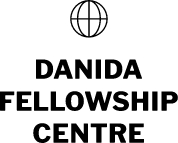Research and Capacity Building Related to Medicines for Major Health Problems in Tanzania (malaria, TB, and HIV)
Info
Start date: 31 December, 2008 End date: 30 December, 2012 Project type: Larger strategic projects (prior to 2013) Project code: 11-08-KU Countries: Tanzania Thematic areas: Health, Lead institution: National Institute for Medical Research (NIMR), Tanzania Partner institutions: University of Copenhagen (UCPH), Denmark Policy Brief: Link to Tanzanian research partner Project coordinator: Ib Bygbjerg Total grant: 5,972,699 DKKProject summary
Effective drugs remain essential for the control of diseases like malaria and HIV where effective vaccines are not (yet) available; or when preventive measures alone may not be available, acceptable or practicable. New antiretroviral drugs (ARV) become available continuously; this is not the case for malaria and other diseases primarily affecting poor countries, with few exceptions (like artemisinin-based combination therapies, ACT for malaria). There is a great need to research into securing the drugs we have, by proper manufacturing, usage and distribution of and adherence to these, along with searching for new drugs. For any drug, new or old, and combinations of drugs, effects as well as side-effects should be monitored; unexpected effects may be revealed only post marketing and/or when used by vulnerable individuals; drug-uptake or -metabolism may differ from those persons originally tested with the drugs (often healthy young Caucasian men). Patients in rich countries are increasingly supplied with drugs tailored to fit individual pharmaco-genomics, and side-effects are monitored post-marketing. Poorer populations are left with standard drugs, sometimes sub-standard, often not adopted to nutritional condition, co-morbidity, age, sex or genetic constitution. Many actors on the relief and development scene advocate for scaling up supplies of eg. ARV for HIV and ACT for malaria, fewer prioritize developing and integration of health-services, delivery, surveillance and quality assurance. Only few actors and researchers focus on how drugs for different diseases are actually being (mis)used, how they may interact, or how they may not act because of being sub-standard, or even counter-feit produced. The key questions for this applications are: Is the lack of control of malaria (and HIV) in Africa (using NE Tanzania as an example), besides of the well-known role of poverty, related to lack of targeting, and lack of proper uptake, use and adherence, rather than due to lack of drugs? How can combinations of drugs and of interventions be optimised? How can development of drug-resistance be prevented? Diseases may - just like drugs - interact synergistic, additive or antagonistic: HIV (re-)activating TB, malaria worsening HIV and vice versa. Other key questions are whether the new combinations of antimalarials, ACT, may interact with ARV like the anti-TB drug, rifampicin does, and whether controlling one disease (malaria), may delay progression of another (HIV). Finally, whether introduction of new diagnostic tools may help targeting treatment and avoid over- as well-as under-use of medicines against malaria, and HIV, and prevent resistance, and in the end reduce burden of disease(s).
Outputs
Project Completion Report:
The project has built research capacity around use of medicines for major health problems in Tanzania: Malaria and HIV, and on how they may interact. A remark- able decline in malaria in the study area was found and change in resistance to some antimalarials. Resistance to SP-Fansidar remained high in spite of official change to other drugs. Unauthorized sales were a likely cause. This may hamper SP use for pregnant women. Confirming malaria before treatment is increasingly important. Rapid diagnostic tests work, but quality must be assured. RDT strips may also be used for extraction of parasite DNA for surveillance of resistance genes. The ph.d. and post.doc. on these issues have been completed. Antimalarials and antiretroviral drugs may interact, just as malaria may worsen HIV, and vice versa. Patients treated for both may experience higher or lower effects and possibly more adverse effects. This study, co-funded by BMGF, is completed but most data not analysed yet. Apparently, major harmful interaction was not found. An added possibly important fmding was that cutt-off values for some key laboratory parameters based on Caucasian populations are not feasible for (some) Tanzanian populations, and that laboratory parameters induced by infection - malaria and or HIV - may easily be mis-intepreted as drug-induced.The last ph.d. study on pharmakogenetic is delayed by pregancy. It will add new dimensions to understanding infection and interaction of drugs against malaria and HIV.
Go back to all projects
